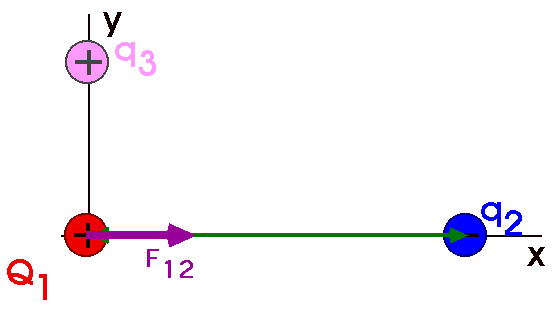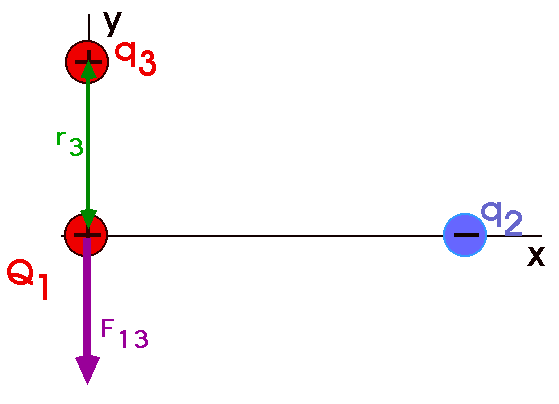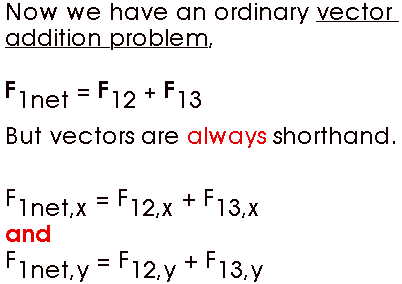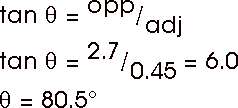

Coulomb's Law: A Numerical Example
What is the force on charge Q1 because of the charges q2 and q3?
That's all there is to it!
Now let's try a real example.
What is the net force on charge Q1?
First, concentrate on just Q1 and q2,

Notice, from the geometry of Q1 and q2, that F12 has only an x-component. Its y-component is zero. F12x = 0.45 N and F12y = 0.
Now, focus attention on Q1 and q3.

Notice, from the geometry of Q1 and q3, that F13 has only a y-component. Its x-component is zero. F13x = 0 and F13y = - 2.7 N. The negative sign on F13y = - 2.7 N means that it points down, of course.
Now we have the components of the two forces F12 and F13 so we can add them together.

Notice that the answer is NOT F1net = (0.45 N) + (- 2.7 N) = - 2.25 N. It is very important that these forces F1 and F2 are added as vectors!
F1net = 2.74 N is the magnitude of the force acting on charge Q1. Now we need to ask what the direction of this force is. What is the angle theta between the x-axis and the force F1net?

(c) Doug Davis, 2002; all rights reserved
Return to Ch 23 ToC